Trout sedated and squeezed in Brusimpiano
It sounds like a heinous crime, with the poor fish as the victims, if it were not a summary of an annual event that seeks to repopulate the lake.
If they made a remake of the famous film of the 1990s The Horse Whisperer along the banks of Lake Ceresio, it might be called The Fish Squeezers, and it would star Alberto Borroni and Luigi Corti.
Indeed, this is what is being done, this year, like every year, at squeezing time at the fish farm in Brusimpiano. Not oranges or olives, as you might think, given the season, but trout. Male and female trout are being bred by volunteers from the village on Lake Ceresio, which, thanks to this operation, lay and fertilise hundreds of thousands of eggs.
“We take about a dozen females at a time, and put them in a tank in which we add a few drops of clove extract,” Alberto Borroni, the fish farming coordinator, told us enthusiastically. “By doing this, the trout become relaxed, and thanks to something totally natural, we manage to sedate them.” At that point, the experience that has been handed down from generation to generation comes into play; the volunteers put on special gloves, catch the animals and apply light pressure to their abdomens to empty them of their precious contents, the eggs. Once this step is over, the fish are put back into a tank with well-oxygenated water, where they immediately recover from their clove-induced torpor.
The males are given the same treatment, although a lot fewer are needed: about one male for every ten females. Once the sperm has been extracted, special trays are created where it is mixed with the eggs, which are fertilised in just ten seconds.
Fertilised eggs
How long does it take them to hatch? Here too, the answer might seem strange: 400 degrees. The number of days these eggs need to hatch is calculated beginning with this number (400°C) divided by the water temperature. This means that eggs laid and kept at 10°C, will need approximately forty days (400°C / 10°C = 40). In Brusimpiano, water enters the fish tanks directly from the River Trallo, and its temperature is not only not constant, but sometimes it drops well below the value given as the example, so it’s not possible to know exactly when the happy event will take place. It is usually in early March.
Once they have hatched, the very small fish feed independently for about one month. They feed on the yolk sacks that they developed in. When they have finished that source of nourishment, they start being fed with special foodstuffs; then, about one month passes before they are released, which is done each spring, by volunteers.
This year, the work of the fish farm is even more important and difficult. In June 2020, because of the exceptional amount of rainfall, the River Trallo, which provides the water for the farm’s fish tanks, flooded, bringing with it a lot of detritus, sand and mud, filling the tanks and preventing the water from coming. The result was that more than 200,000 fish died.
“Today, the tanks are in order; we have carried out some interventions, thanks to funds allocated by the Comunità Montana, who allowed us to redo the external tanks in concrete, for the partition walls. Paradoxically, we were helped by the absence of fish,” Borroni explained. “What happened in June was an exceptional event, which we hope will not repeat. If it does, we’ll be better prepared, because we’ve cleaned the pre-existing tanks, between the flow of the river and the fish farm, by hand, and we hope this will guarantee that any materials brought by the flooding river will accumulate there.”
And it will take a couple of years for the repopulation work to resume at full capacity, after the loss of so many fish. For some time, there will be fewer releases and, above all, there will be less rotation of the females, which were once replaced every two or three years, and which were decimated, by almost 90% in 2020.
In the meantime, the enthusiastic work of the volunteers and friends of this trout nursery goes on, as they look forward to reopening the doors to their young visitors; every year, several hundred children from local schools take a trip to the fish farm, to hear many curious and interesting anecdotes about the inhabitants of our lakes and about the people who care about their survival.
Translated by Elena Gandelli, Charlotte Ovalle and Chiara Brovelli
Reviewed by Prof. Rolf Cook
La community di VareseNews
Loro ne fanno già parte
Ultimi commenti
Emanuele Zanetti su Motociclista di Ferno ucciso da un orso in Romania
GrandeFratello su Superate le 700 firme per la petizione sul recupero del Grand Hotel Campo dei Fiori di Varese
Felice su Motociclista di Ferno ucciso da un orso in Romania
Stefano64 su Neil Young torna dopo l'enorme successo di Harvest: ma non è il disco che tutti si aspettano
Alessandro Zanzi su Superate le 700 firme per la petizione sul recupero del Grand Hotel Campo dei Fiori di Varese
Felice su La bibliocabina, la panchina e il cane che fa pipì. A Fagnano Olona scoppia la polemica




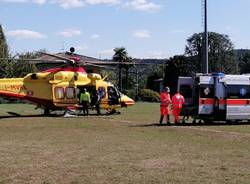
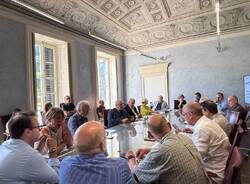
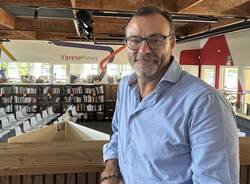
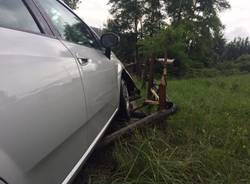

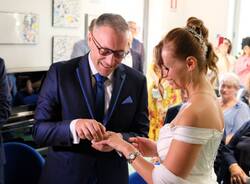






Accedi o registrati per commentare questo articolo.
L'email è richiesta ma non verrà mostrata ai visitatori. Il contenuto di questo commento esprime il pensiero dell'autore e non rappresenta la linea editoriale di VareseNews.it, che rimane autonoma e indipendente. I messaggi inclusi nei commenti non sono testi giornalistici, ma post inviati dai singoli lettori che possono essere automaticamente pubblicati senza filtro preventivo. I commenti che includano uno o più link a siti esterni verranno rimossi in automatico dal sistema.